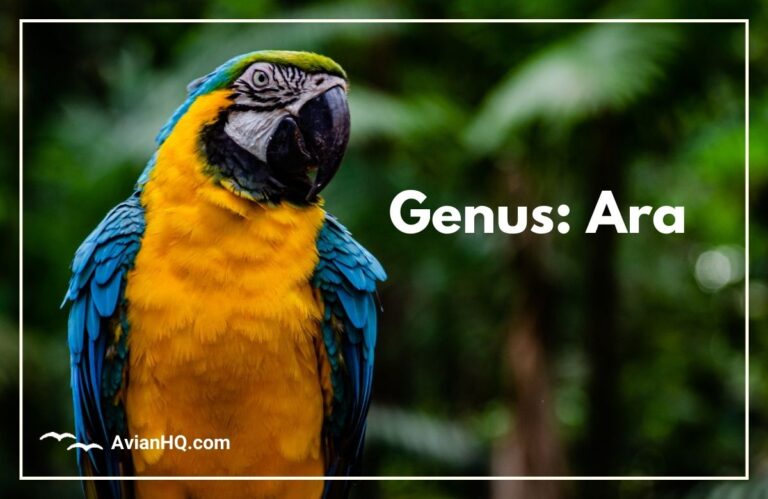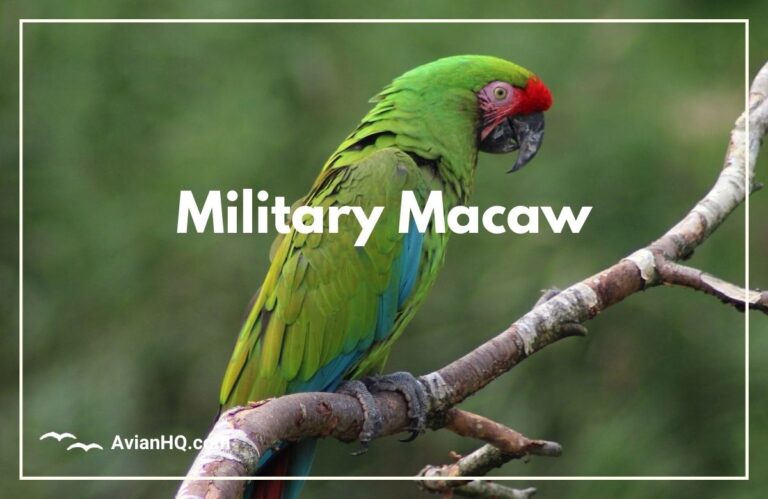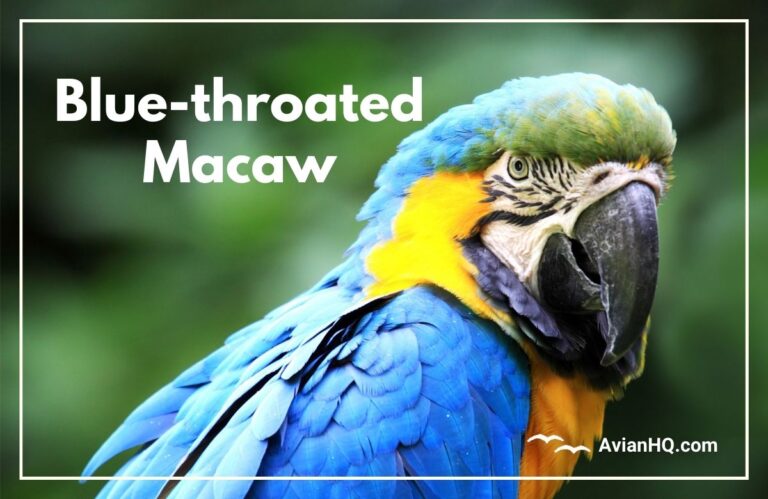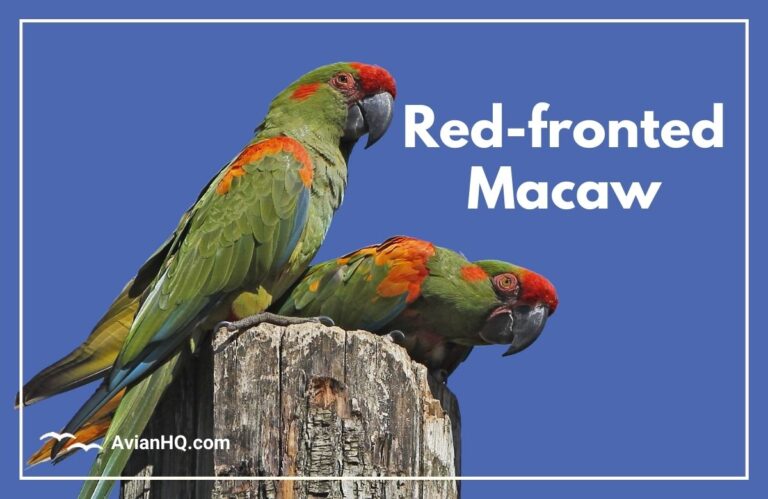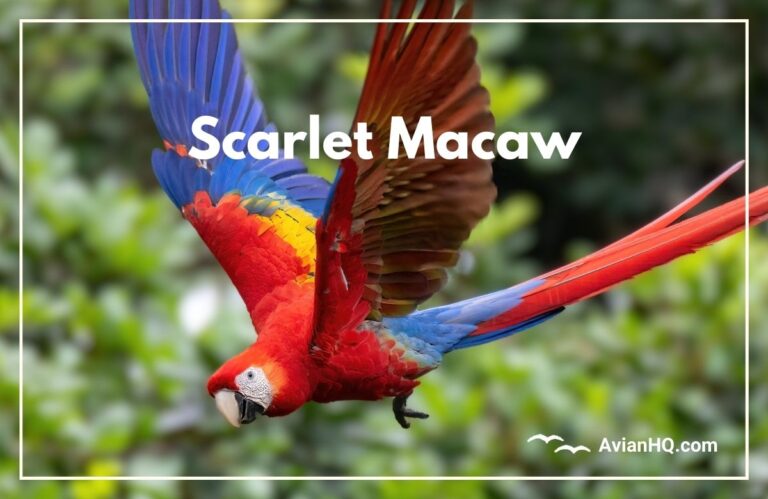Red-and-green Macaw (Ara chloropterus)
The Red-and-green Macaw (Ara chloropterus) is a captivating macaw species that enchants bird enthusiasts with its vibrant plumage and engaging behavior. As one of the most recognizable bird species in the world, the Red-and-green Macaw is known for its striking combination of red and green feathers, captivating birdwatchers and nature lovers alike.
Native to the lush tropical rainforests of Central and South America, including countries such as Brazil, Bolivia, Peru, and Ecuador, this sociable bird species has carved a place in both the natural ecosystem and the cultural heritage of the region. Its scientific name, Ara chloropterus, reflects its distinct green-winged appearance, captivating the imagination of those who encounter it.
Join us as we explore the fascinating history, physical characteristics, habitat, diet, behavior, and conservation status of the Red-and-green Macaw. Discover the awe-inspiring beauty of this macaw species and gain a deeper understanding of its significance in the avian world and its role in the intricate tapestry of nature.
History and Taxonomy
The Red-and-green Macaw (Ara chloropterus) has a rich history dating back to its first discovery by European explorers in the 16th century. Its scientific name, Ara chloropterus, is derived from the Greek words “ara,” meaning macaw, and “chloropterus,” meaning green-winged. This name beautifully captures the vibrant plumage that distinguishes this remarkable bird species.
While there are no recognized subspecies of the Red-and-green Macaw, minor variations in coloration and distribution may exist among different populations. These variations add to the species’ unique appeal and highlight the diversity within the Red-and-green Macaw population.
Physical Appearance
Size and Weight
The Red-and-green Macaw, also known as Ara chloropterus, is an impressive macaw species renowned for its large size. On average, these birds measure approximately 90-95 cm (35-37 inches) in length. In terms of weight, they typically range from 1.2-1.7 kg (2.6-3.7 lbs), making them one of the heaviest macaw species.
Plumage Colors and Markings
The vibrant and eye-catching plumage of the Red-and-green Macaw is captivating. Its feathers are predominantly red, with the wings displaying a mesmerizing shade of green. The tail feathers are a striking blue color. Additionally, the bird’s face is bare and white, accentuating the ornate patterns that encircle its eyes, adding to its distinct appearance.
Differences Between Subspecies
While there are no recognized subspecies of the Red-and-green Macaw (Ara chloropterus), slight variations in coloration and distribution may exist among different populations. These variations, however, have minimal impact on the physical appearance of the birds.
Bill, Eyes, Legs/Feet
The Red-and-green Macaw possesses a strong, hooked bill that is well-suited for their omnivorous diet. Their bills are used to crack open hard nuts and seeds. They have dark eyes that are prominent against their colorful plumage. In terms of their legs and feet, the macaw sports sturdy limbs and strong feet adapted for climbing, gripping tree branches, and maneuvering through their natural habitat.
Habitat and Distribution
The Red-and-green Macaw (Ara chloropterus) is primarily found in the tropical rainforests of Central and South America. Its native range encompasses countries such as Brazil, Bolivia, Peru, and Ecuador. Within these regions, the macaw inhabits dense forests, particularly areas near rivers and wetlands. These habitats provide the macaw with abundant food sources and suitable nesting sites.
However, due to deforestation and the illegal pet trade, the Red-and-green Macaw has been introduced to some other regions, including parts of Florida in the United States. This introduction has allowed the macaw to establish populations in new environments, albeit outside its natural range.
The Red-and-green Macaw is known for its adaptability to varying elevations. It can be found in habitats ranging from sea level to approximately 900 meters (2,950 feet) above sea level. This broad elevation range demonstrates the macaw’s ability to thrive in different ecological conditions within its distribution.
Diet and Feeding
The Red-and-green Macaw (Ara chloropterus) has a diverse and adaptable diet that allows it to survive in a variety of environments. The macaw is an omnivorous species, consuming a wide range of plant-based and animal-based foods.
Overview of diet in the wild
In the wild, Red-and-green Macaws primarily rely on fruits, seeds, nuts, and berries as their main source of nutrition. These fruits and seeds provide essential carbohydrates, fats, and proteins necessary for their energy requirements. The macaws have a keen ability to locate and access these food sources in the dense rainforest vegetation.
In addition to fruits and seeds, Red-and-green Macaws also consume other plant materials like leaves, flowers, and bark. This provides them with additional nutrients and fiber. They may also occasionally incorporate small invertebrates into their diet as a source of animal protein.
Types of foods consumed
The Red-and-green Macaw has a varied diet, and some of the specific foods it consumes include:
- Fruits: Various tropical fruits such as palm fruits, figs, and berries are an important part of their diet. These fruits provide essential vitamins and minerals.
- Seeds and Nuts: Macaws possess a strong and powerful beak, which enables them to crack open hard nuts like Brazil nuts, almonds, and walnuts to access the nutritious seeds inside.
- Leaves and Flowers: They also feed on the tender leaves and flowers of certain plant species. These plant materials offer supplemental nutrients and add variety to their diet.
- Invertebrates: While not a significant part of their diet, Red-and-green Macaws may occasionally consume small insects, larvae, and other invertebrates. This behavior helps them obtain additional protein and nutrients.
- Clay Licks: Red-and-green Macaws, like many other macaw species, regularly visit clay licks or mineral-rich exposed soil areas. Here, they consume clay, which aids in their digestion and provides essential minerals and nutrients.
Feeding behaviors
To obtain food from their environment, Red-and-green Macaws exhibit various feeding behaviors:
- Cracking Nuts: With their strong beak, the macaws can crack open hard nuts, extracting the seeds inside.
- Manipulating Food: They use their feet to hold and manipulate food items, grasping them firmly while eating.
- Foraging in Tree Canopies: The macaws are skilled at foraging in the upper canopies of trees, where they find an abundance of fruits, seeds, and flowers.
- Foraging on the Forest Floor: They also search for fallen fruits and seeds on the forest floor, taking advantage of resources overlooked by other animals.
The Red-and-green Macaw’s varied diet and feeding behaviors showcase its adaptability and resourcefulness in obtaining the necessary nutrition from its natural habitat.
| Food Type | Description |
|---|---|
| Fruits | Various tropical fruits such as palm fruits, figs, and berries provide essential vitamins and minerals. |
| Seeds and Nuts | Macaws crack open hard nuts like Brazil nuts, almonds, and walnuts to access nutritious seeds. |
| Leaves and Flowers | Tender leaves and flowers of certain plant species offer supplemental nutrients and variety. |
| Invertebrates | Occasionally consume small insects, larvae, and other invertebrates for protein and nutrients. |
| Clay Licks | Regular visits to clay licks provide essential minerals and aid in digestion. |
Breeding and Reproduction
The breeding and reproduction of the Red-and-green Macaw, scientifically known as Ara chloropterus, is a fascinating process. Monogamous pairs of Red-and-green Macaws typically breed once a year, demonstrating their commitment to their partners and offspring.
Nesting Sites
When it comes to nesting, Red-and-green Macaws show a preference for tree cavities, particularly in older and taller trees. They may also utilize abandoned nests of other bird species. This selection of nesting sites provides a safe and protected space for their eggs and allows the parents to efficiently care for their young.
Clutch Size
During each breeding season, the female Red-and-green Macaw lays a clutch of 2-3 eggs. This clutch size ensures a balance between reproduction and parental care, allowing the parents to provide adequate attention and resources to each offspring.
Incubation and Fledging Times
Both parents take turns incubating the eggs, with incubation lasting approximately 24-28 days. This shared responsibility reflects their cooperative nature and emphasizes the importance of both parents’ roles in raising their offspring.
After hatching, the young chicks spend an additional 90-100 days in the nest, gradually developing their physical abilities and growing their flight feathers. This period, known as fledging, prepares the young macaws for the demands of life outside the nest, aiding their eventual journey into the wild.
Behavior and Ecology
Red-and-green Macaws are highly social birds and often seen in flocks ranging from a few individuals to large groups. They communicate through loud calls and engage in various behaviors such as flying together, preening each other, and engaging in playful interactions.
At night, they gather in communal roosts, consisting of numerous macaw individuals. These roosting patterns provide them with safety in numbers and facilitate social bonding.
When it comes to foraging and feeding behaviors, Red-and-green Macaws display remarkable adaptability. They search for food in the canopy of trees, using their keen eyesight to spot fruits, nuts, and seeds. Their strong, hooked bills allow them to crack open hard nuts to access the nutritious contents inside. The dexterity of their feet enables them to manipulate food items while perched or in mid-air.
Red-and-green Macaws have been observed interacting with other species in their habitat. They may encounter other macaw species or different bird species while foraging or competing for nest sites. Communal feeding areas can attract a variety of avian visitors, leading to interesting inter-species dynamics.
| Flock Sizes | Roosting Patterns | Foraging and Feeding Behaviors | Interactions with Other Species |
|---|---|---|---|
| Varies from small groups to large flocks | Gather in communal roosts at night | Search for food in tree canopies, crack open nuts, use feet to manipulate food items | May interact with other macaw species and different bird species in communal feeding areas or during nest-site competition |
The behavior and ecology of Red-and-green Macaws highlight their social nature, adaptability in foraging, and the importance of interactions within their ecosystem. Understanding these aspects provides valuable insights into their survival strategies and underscores the significance of conservation efforts aimed at preserving their habitats and ensuring their continued existence in the wild.
Conservation Status
The Red-and-green Macaw (Ara chloropterus) is categorized as Least Concern on the International Union for Conservation of Nature (IUCN) Red List, indicating that its overall population is relatively stable and not at immediate risk of extinction.
IUCN Category
The IUCN category of Least Concern reflects the Red-and-green Macaw’s conservation status, indicating that it is not facing significant threats that would warrant a more urgent conservation designation.
Population Estimates and Trends
Accurate population estimates for the Red-and-green Macaw are challenging due to its extensive range across several countries in Central and South America. However, available data suggest that the overall population is stable or slightly decreasing in certain regions where the species faces habitat loss and exploitation for the illegal pet trade.
Major Threats
The Red-and-green Macaw faces several major threats to its survival. Habitat loss and deforestation resulting from agricultural expansion, logging, and urbanization are significant concerns, as they diminish the availability of suitable nesting sites and food resources. Additionally, the capture and illegal trade of Red-and-green Macaws for the pet industry pose a serious threat to wild populations, leading to further population decline.
Protection Efforts
A range of conservation initiatives and protection efforts are in place to safeguard the Red-and-green Macaw and its habitat. These efforts focus on preserving and restoring the species’ natural habitats, advocating for sustainable land use practices, and creating protected areas where the macaws can thrive. Conservation organizations also collaborate with local communities, government agencies, and international partners to strengthen anti-poaching measures, enforce wildlife protection laws, and raise awareness about the importance of macaw conservation.
| Conservation Status | IUCN Category | Population Estimates and Trends | Major Threats | Protection Efforts |
|---|---|---|---|---|
| Least Concern | – | Stable or slightly decreasing in certain areas | Habitat loss, deforestation, illegal pet trade | Preserving habitats, advocacy for sustainability, protected areas, anti-poaching measures, awareness campaigns |
Cultural Significance
The Red-and-green Macaw holds cultural significance in many indigenous cultures of its native range. It is often revered for its vibrant colors and considered a symbol of power, fertility, and spiritual connection to nature. The feathers of the Red-and-green Macaw are sometimes used in traditional ceremonies, crafts, and clothing.
Symbols
The Red-and-green Macaw, or Ara chloropterus, has a rich cultural heritage and is highly valued for its symbolic representation in indigenous cultures. With its striking red and green plumage, it is seen as a powerful and majestic creature, embodying vitality, strength, and resilience.
“The Red-and-green Macaw is like a guardian spirit, watching over our people and reminding us of our deep connection to the natural world. Its colors express our cultural identity and remind us to protect and preserve our traditions.”
– Indigenous Elder
Ceremonies and Traditions
In many indigenous cultures, the Red-and-green Macaw plays a significant role in ceremonies and traditional practices. Its feathers are often used in headdresses, costumes, and intricate crafts, symbolizing the integration of nature and culture. These vibrant plumes are believed to carry spiritual energy and are honored as sacred artifacts.
During ceremonies, the presence of the Red-and-green Macaw is believed to invoke blessings, fertility, and good fortune. Its vivid colors and majestic appearance create a sense of awe and reverence, connecting participants with the natural world and their ancestral heritage.
Connection to Nature
Indigenous cultures view the Red-and-green Macaw as a representation of the interconnectedness between humans and nature. Its ability to soar through the rainforest canopy reflects the harmony and balance that can be achieved when people live in harmony with their environment.
The presence of the Red-and-green Macaw in indigenous cultures serves as a reminder of the importance of protecting and preserving the biodiversity of their ancestral lands. Through cultural practices and traditional knowledge, these communities continue to promote sustainable practices and advocate for the conservation of the Red-and-green Macaw and its habitat.
Social and Community Bonding
The Red-and-green Macaw also plays a role in fostering a sense of community and social bonding within indigenous cultures. Its presence is often celebrated through festive gatherings and communal activities, where people come together to share stories, music, and dance, strengthening their cultural identity and connection to nature.
In these cultural celebrations, the Red-and-green Macaw is honored as a symbol of unity and collective spirit. It serves as a reminder of the shared heritage, traditions, and values that form the foundation of indigenous communities.
Conclusion
The Red-and-green Macaw, also known as Ara chloropterus, is a captivating bird species admired for its striking appearance, engaging behavior, and sociable nature. This magnificent macaw, with its vibrant plumage of red, green, and blue, stands out in the dense rainforests of Central and South America.
Unfortunately, the Red-and-green Macaw faces challenges such as habitat loss and illegal pet trade. However, there is hope as conservation efforts are actively underway to protect and preserve this magnificent species. By raising awareness, promoting sustainable practices, and implementing anti-poaching measures, steps are being taken to ensure the survival of this beautiful bird.
Understanding the history, physical characteristics, habitat, diet, behavior, and conservation status of the Red-and-green Macaw is crucial for appreciating its uniqueness and safeguarding its existence for future generations. By valuing and conserving the natural habitats these birds depend on, we can contribute to the lasting protection of this iconic species.


